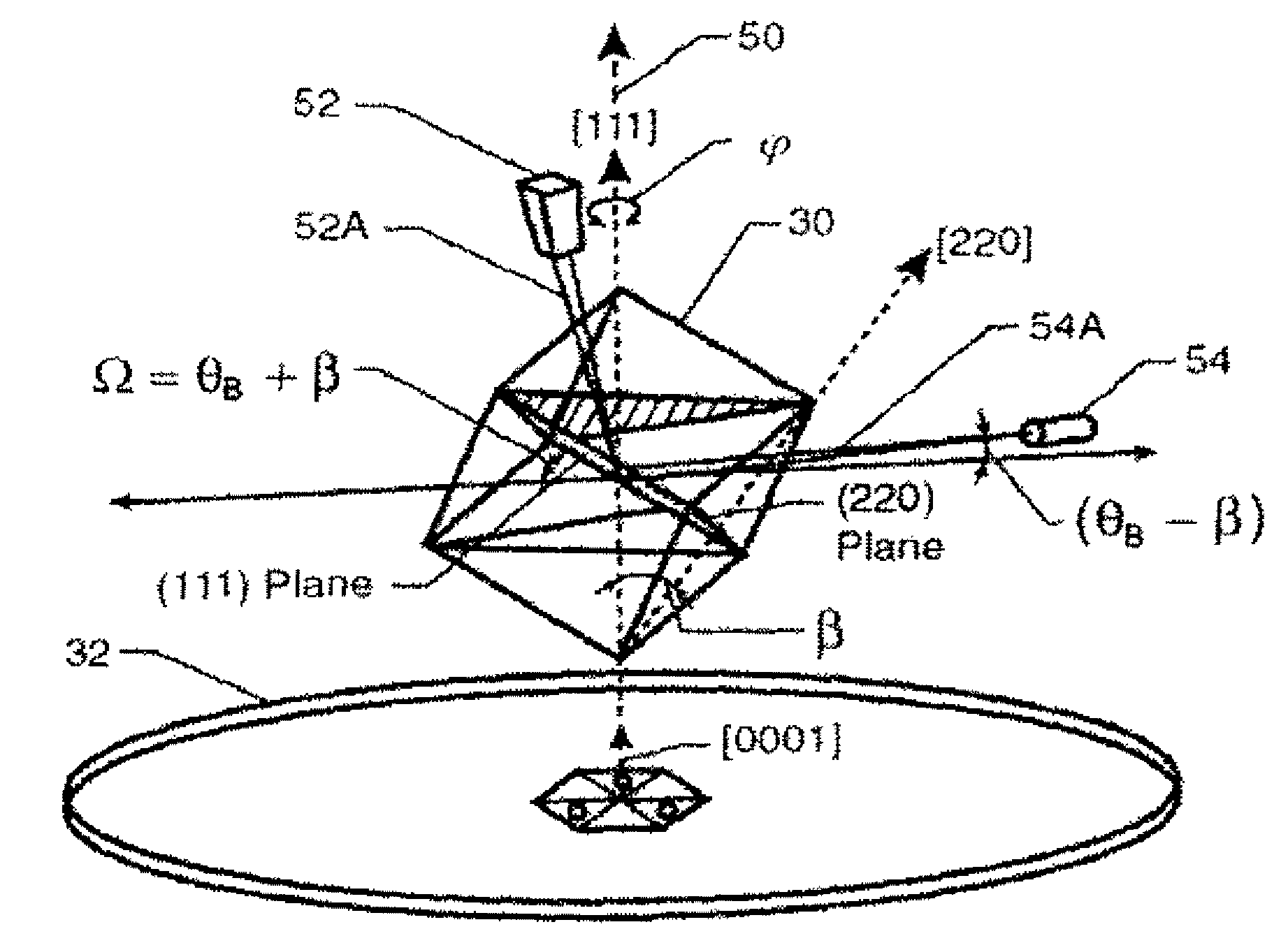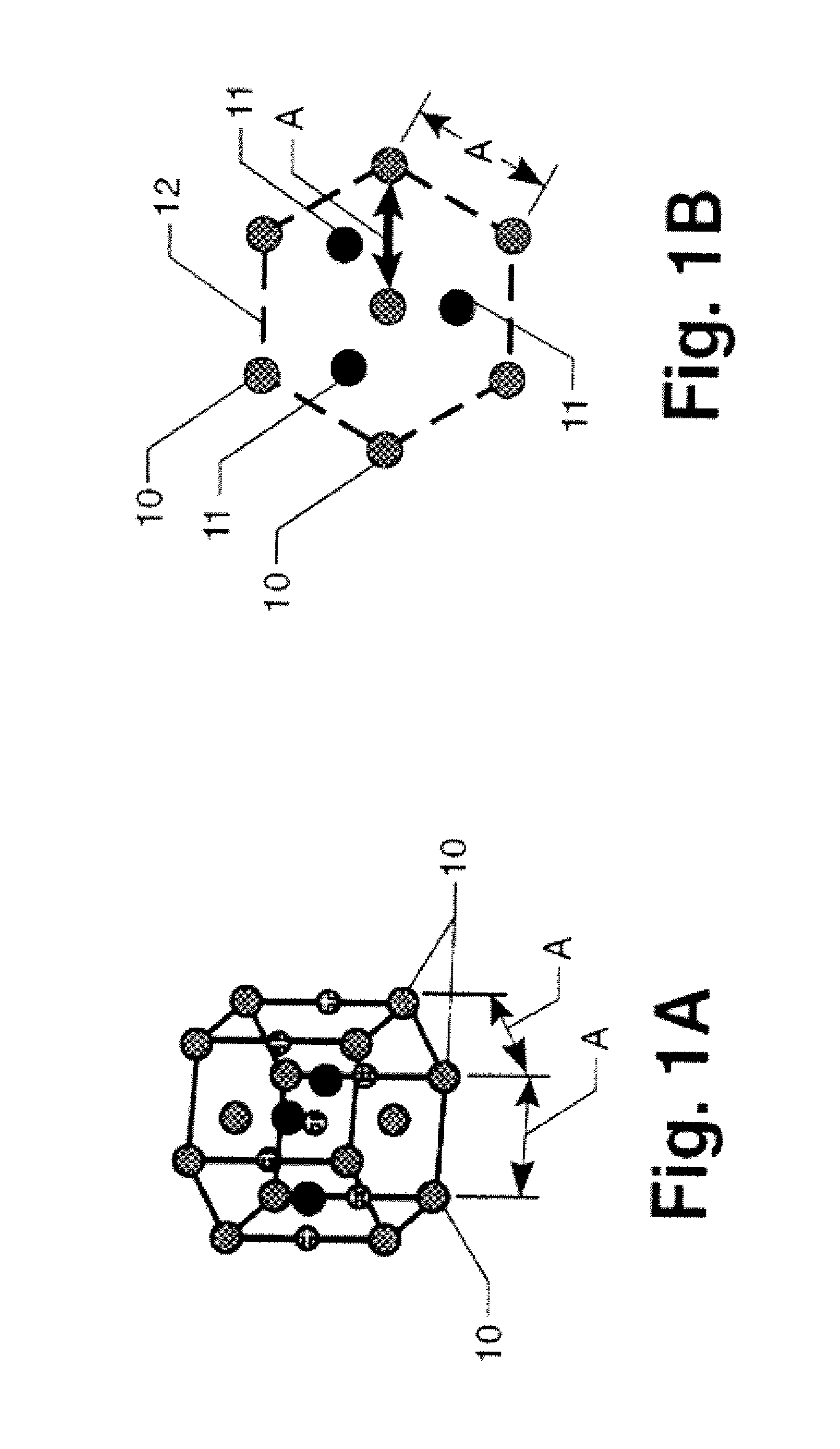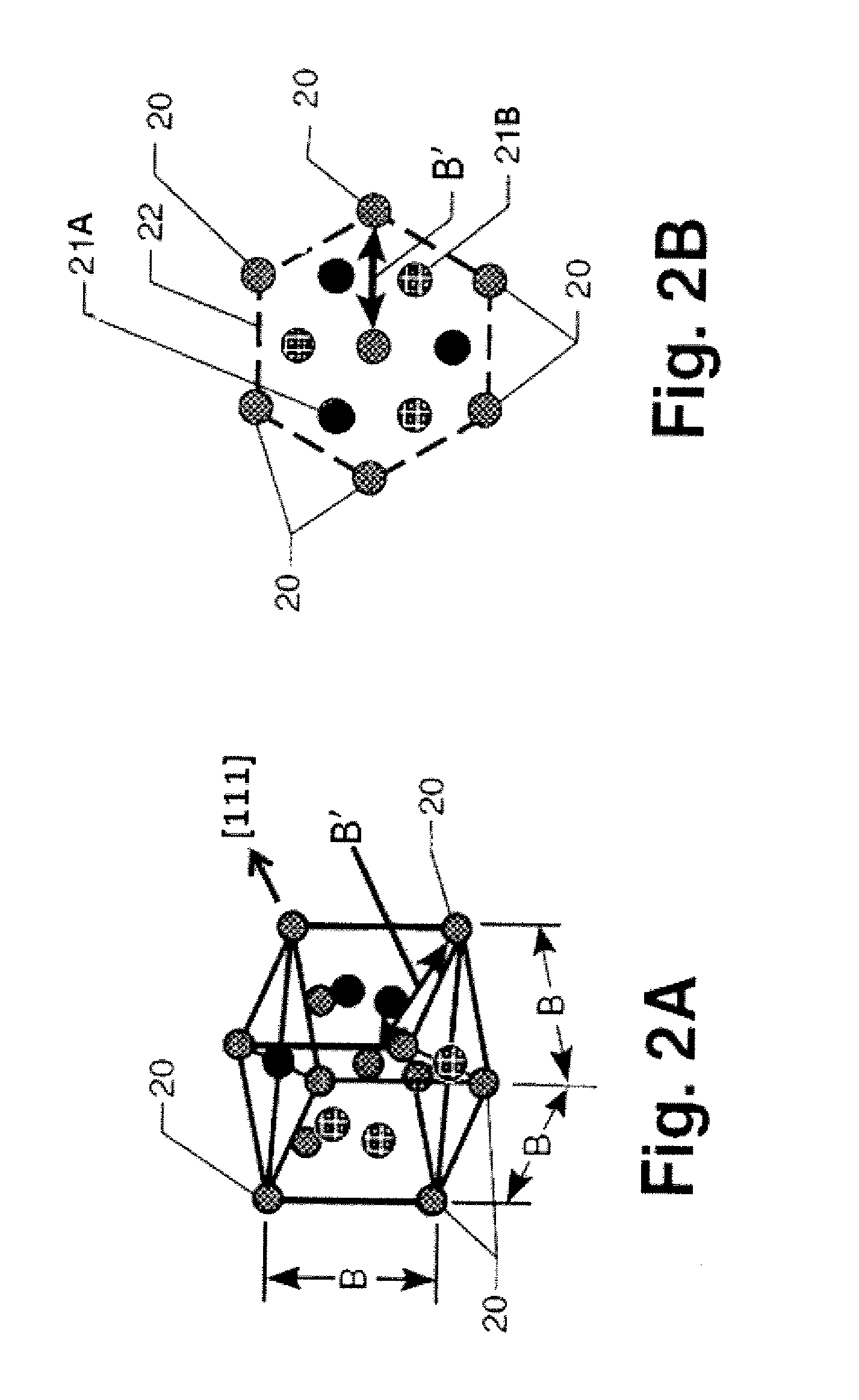Method Of Generating X-Ray Diffraction Data For Integral Detection Of Twin Defects In Super-Hetero-Epitaxial Materials
a technology of super-hetero-epitaxial materials and x-ray diffraction data, which is applied in the direction of material analysis using radiation diffraction, instruments, measurement devices, etc., can solve the problems of difficult to achieve high-quality (i.e., defect-free) sige layers on silicon substrates, and thick growth of thick layers
- Summary
- Abstract
- Description
- Claims
- Application Information
AI Technical Summary
Benefits of technology
Problems solved by technology
Method used
Image
Examples
first embodiment
[0061]In the first embodiment, illustrated in FIG. 6, the following setup criteria apply:[0062](i) The goniometer angle Ω associated with X-ray beam 52A is set equal to the Bragg angle θB.[0063](ii) Detector 54 is positioned so that its direction of focus 54A is equal to 2*θB (i.e., the conventional Bragg-Brentano setup is used where θ=θB).[0064](iii) The alloy sample is positioned (e.g., via movement of the XRD system's sample holder) such that the [111] vector of structure 30 (i.e., the [111] vector is normal to the {111} crystal plane) makes an angle of χ=β relative to reference orientation 50 of the XRD system and lying in the common plane defined by X-ray beam 52A and direction of focus 54A.
[0065]The angle β is the inter-planar angle between the alloy's {111} crystal plane and the selected non-perpendicular plane (i.e., the {220} crystal plane in the illustrated example). As is known in the art, the inter-planar angle ˜ between two crystal planes is defined as
cos(β)=(h1h2+k1k2+...
second embodiment
[0073]Second and third test-ready position setups will now be explained with reference to FIGS. 7 and 8. As mentioned above, the first step is to calculate the Bragg angle θB for the alloy that will once again be SiGe for purpose of illustration. In the present invention illustrated in FIG. 7, the following setup criteria apply:[0074](i) The goniometer angle Ω is set equal to (θB+β) where β is once again the inter-planar angle described above.[0075](ii) Detector 54 is positioned so that its direction of focus 54A is equal to (θB−β)[0076](iii) The sample is positioned such that the [111] vector is aligned with the XRD system's reference orientation 50. That is, the tilt angle χ equals zero.
[0077]With the above-described test-ready positioning of the alloy, the XRD system is then operated as previously described for the first embodiment.
third embodiment
[0078]In a third embodiment illustrated in FIG. 8, the Bragg angle θB is calculated and the following setup criteria apply:[0079](i) The goniometer angle Ω is set equal to (θB−β) where β is once again the inter-planar angle described above.[0080](ii) Detector 54 is positioned so that its direction of focus 54A is equal to (θB+β).[0081](iii) The sample is positioned such that the [111] vector is aligned with the XRD system's reference orientation 50. That is, the tilt angle χ equals zero.
[0082]With the above-described test ready positioning of the alloy, the XRD system is then operated as previously described for the first embodiment.
[0083]In each of the above-described embodiments, the phrase “phiscan” assumes an azimuthal rotation of the sample being tested. However, the present invention is not so limited. That is, sample rotation may not be required in test set-ups that utilize multiple detectors to record diffraction data at the appropriate angles of φ where these angles lie in ...
PUM
| Property | Measurement | Unit |
|---|---|---|
| azimuthal angle | aaaaa | aaaaa |
| azimuthal angle | aaaaa | aaaaa |
| tilt angle | aaaaa | aaaaa |
Abstract
Description
Claims
Application Information
 Login to View More
Login to View More - R&D
- Intellectual Property
- Life Sciences
- Materials
- Tech Scout
- Unparalleled Data Quality
- Higher Quality Content
- 60% Fewer Hallucinations
Browse by: Latest US Patents, China's latest patents, Technical Efficacy Thesaurus, Application Domain, Technology Topic, Popular Technical Reports.
© 2025 PatSnap. All rights reserved.Legal|Privacy policy|Modern Slavery Act Transparency Statement|Sitemap|About US| Contact US: help@patsnap.com



